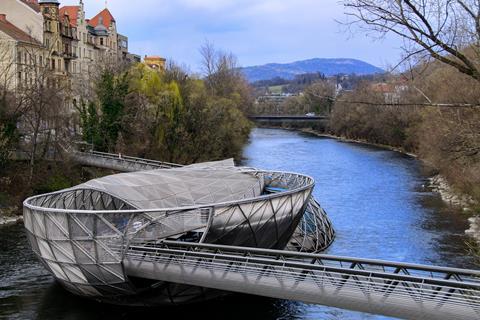On their website, the World Health Organisation (WHO) states that: “safe and readily available water is important for public health, whether it is used for drinking, domestic use, food production or recreational purposes.” In combination with the WHO concept for Water, Sanitation and Hygiene (WASH), governments can set initiatives for drinking water protection.
Undesirable events
According to Directive 2007/60/EC of the European Parliament, it is feasible and desirable to reduce the risk of flood events. In the United Kingdom, advice is given by the government to make sure that people are aware of the dangerous situations a flood can cause and are prepared for its consequences. Besides the catastrophic events in Libya and Greece, where tens-of-thousands of people are suffering under the most recent flood events, heavy rain and unfavorable environmental conditions have caused the greatest local flood of the century in the south of Styria, a province of Austria. In this particular flat area in the south of the Alps, most parts of the water supply are not organized by companies or the provincial government, but by a huge number of private wells – with each supplying only one or two households with fresh water. In general, around 850 public (and an additional 340 private) suppliers provide water intended for human consumption in this province. Due to fortunate circumstances with extensive water resources, the fresh water provided in Styria comes from underground sources and no treated shallow or surface water is used.

Flooding and contamination in Styria
Due to the large amount of rain, wastewater treatment plants had to release a mixture of diluted fecal-contaminated water and rainwater into the rivers. Surface water had been flooding cellars with the effect of damaging petrol tanks, which led to the introduction of aliphatic organic compounds into ground and surface water. Besides this chemical contamination, nearly all wells in the region were heavily contaminated with microbes. Due to the fact that all public water suppliers must have an active emergency plan for such events – such as is suggested by the provincial government of Styria – the affected communes stopped supplying water from the contaminated wells and started to supply the population with commercially available bottled mineral water to prevent an epidemic. The “Styrian epidemic plan”, a comprehensive document provided by the provincial government of Styria in cooperation with academic experts, is a document with a focus on actions in the case of highly infectious diseases spreading in the population. In parts A and B, an action plan for physicians with detailed descriptions concerning different pathogens is described. Part C provides an action plan in the case of a biological terroristic attack (e.g. anthrax, Orthopoxvirus). The last and shortest part of the document (Part D) relates to hygiene actions in the case of a flooding event. It states that, after flooding events, infectious diseases can spread via a fecal-oral pathway due to contaminated drinking water. In particular, Typhus, Paratyphoid fever, Salmonellosis, Dysentery, Hepatitis A, etc. are mentioned as typical fecal-oral induced infections. The recommendation is given to avoid the consumption of potentially contaminated food which has been in contact with surface water. It is also stated that drinking water and water for cooking or personal hygiene must be boiled before usage until the authorities proclaim its safety. A focus on hand hygiene with soap can prevent the intake of pathogens while eating, drinking, or smoking during these events and the clean-up actions. The distribution of bottled mineral water, or supply with tank lorries is also recommended. In these cases, the consumption of drinking water from private wells is therefore a problem, which could be solved by a public water supply.
The “Styrian epidemic plan” was amended in 2016 and now needs further improvement because of the proceedings in the last seven years in terms of infectious diseases. Part D (Flooding events) could be more comprehensive in the next version of the document with additions that were learned from the current event in the south of Styria. Another weak spot in the response to flooding seems to be that many communal authorities are not familiar with this document. A focus on this topic during training courses for members of water supplying companies and communal authorities could circumvent this problem. Fortunately no flood-associated illness was reported during the events due to the fast reaction of communal authorities, fire brigades, and volunteers. In addition, financial assistance and investigations provided by the provincial government of Styria helped the concerned people.
The clearing up actions are still ongoing however, with less than 50% of the damage recovered and an estimated cost of over 100 million euro.
Water samples, which were collected and analyzed at the R&D Institute of Hygiene, Microbiology and Environmental Medicine, Medical University of Graz, Austria showed high fecal contamination combined with a high value of nitrate, total organic carbon and in a few cases a moderately elevated hydrocarbon oil index. During the clean-up efforts, wells were disinfected and mechanically cleansed of residues, with other additional microbiological investigations. Some of the affected wells again showed moderate to high levels of bacterial contamination after the applied procedures, which indicates the vast bacterial contamination of the ground water in this region after the flood. Investigations one-and-a-half months later still showed bacterial contamination in wells in this particular area.
Prevention
In the last few decades, a large effort has been put into the prevention of flood events in Styria, with strategies including water reservoirs for holding-back water and building guidelines for households with e.g. oil-fired heating systems. The current situation shows how climate change has altered our lives and personal living conditions, with tremendous impact during extreme events. An ideal situation would be the rebuilding of natural flood zones that are beside rivers as well as stopping the expansion of impervious surfaces, in combination with building new houses beyond flood zones in rural and urban areas. The idea of re-building all houses in safe areas, however, is neither practical nor desired by the owners. Due to this fact, only extended work on flood prevention can moderate the consequences.








No comments yet